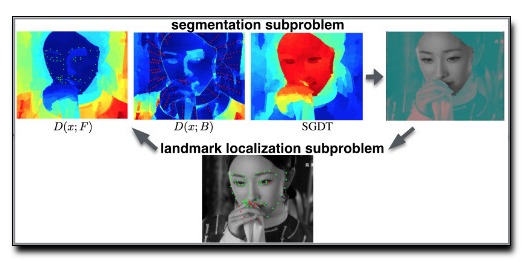
Occlusion poses a significant difficulty for detecting and localizing object keypoints
and subsequent fine-grained identification. We propose a part-based face detection model
that utilizes bottom-up class-specific segmentation in order to jointly detect and segment
out the foreground pixels belonging to the face. The model explicitly represents occlusion
of parts at the detection phase, allowing for hypothesized figure-ground segmentation
to suggest coherent patterns of part occlusion. We show that this bi-directional
interaction between recognition and grouping results in state-of-the-art part localization
accuracy for challenging benchmarks with significant occlusion and yields substantial
gains in the precision of keypoint occlusion prediction.
Download: pdf
Text Reference
Golnaz Ghiasi and Charless C. Fowlkes.
Using segmentation to predict the absence of occluded parts.
In
British Machine Vision Conference (BMVC). 2015.
BibTeX Reference
@inproceedings{GhiasiF_BMVC_2015,
author = "Ghiasi, Golnaz and Fowlkes, Charless C.",
title = "Using segmentation to predict the absence of occluded parts",
booktitle = "British Machine Vision Conference (BMVC)",
year = "2015",
tag = "object_recognition,people,grouping"
}
